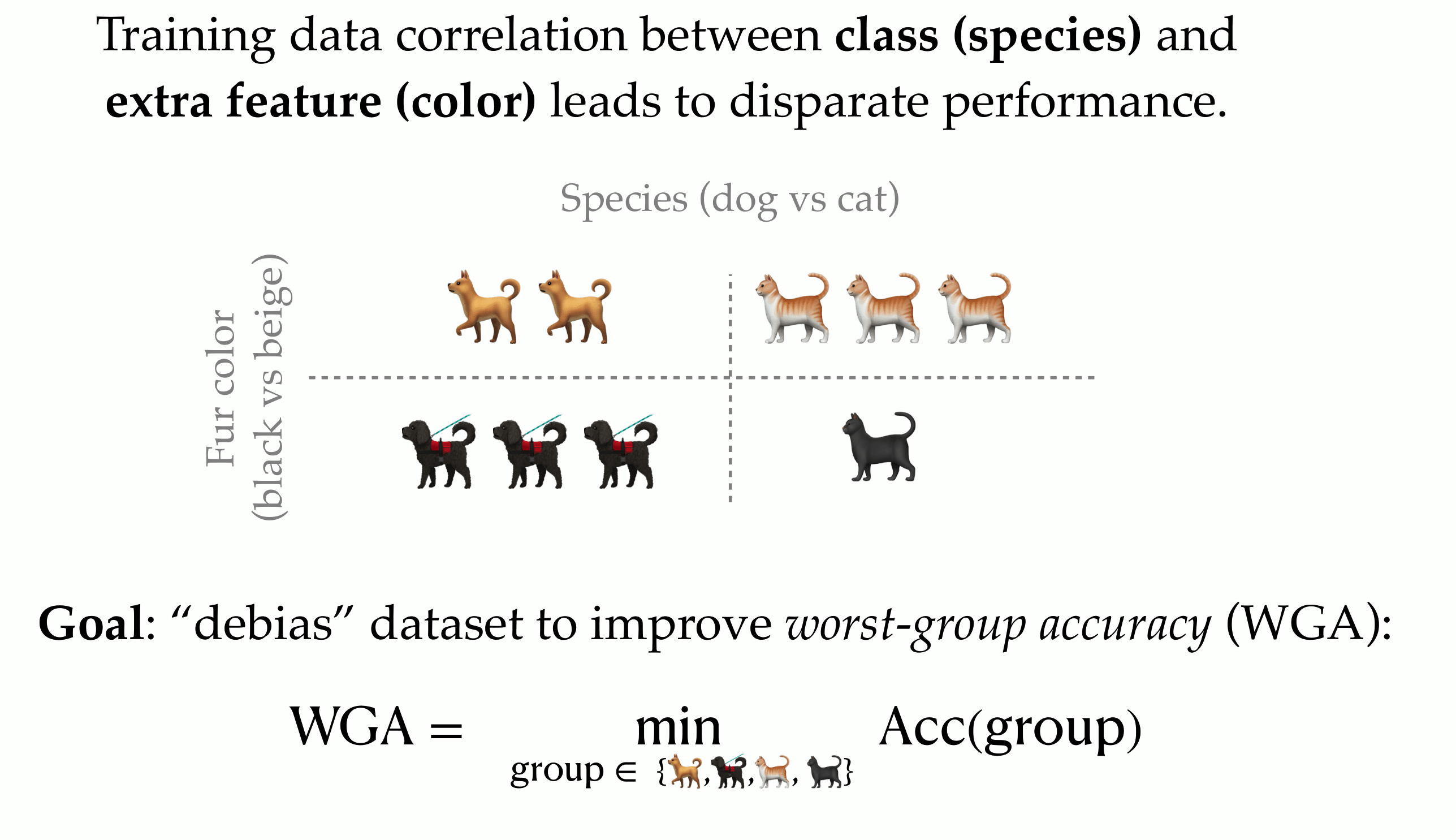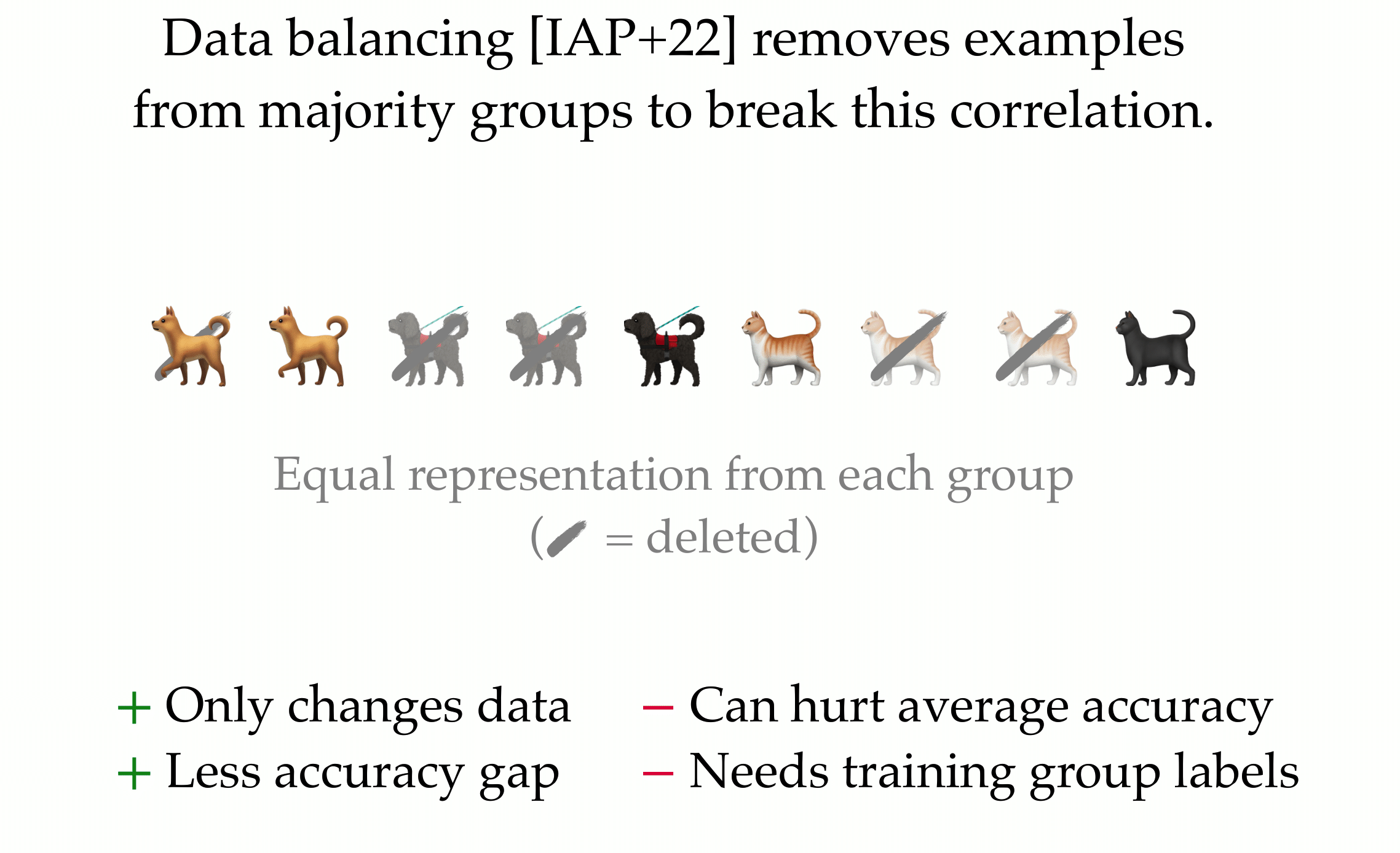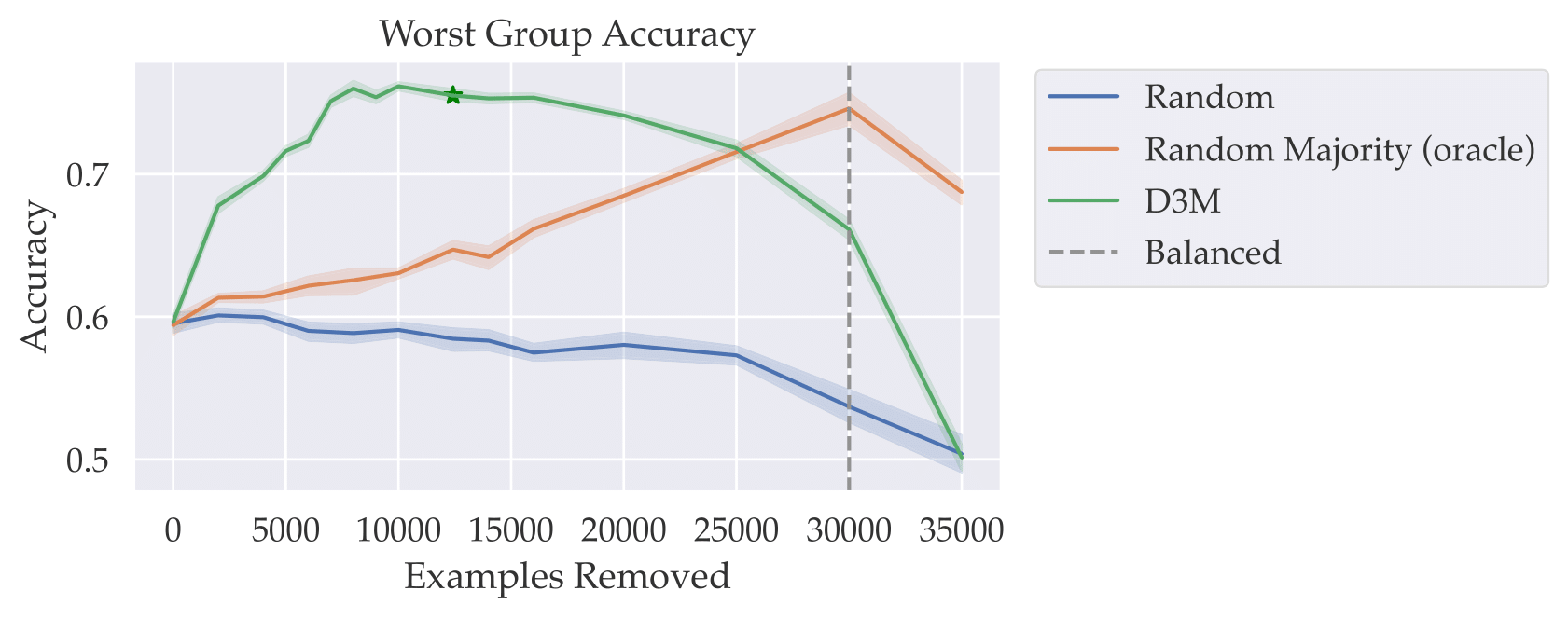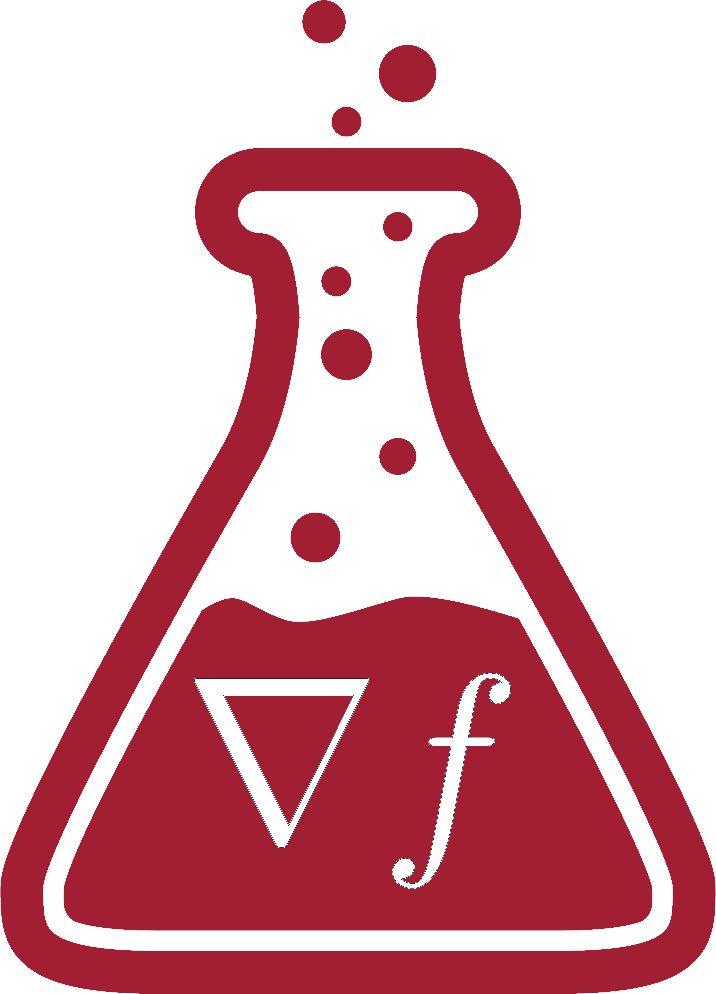Machine learning models are increasingly making decisions in high-stakes scenarios, from healthcare to finance to criminal justice. These models are trained on large-scale datasets that often contain biased data. As a result, these models often exhibit disparate performance across different subgroups of the data. For instance, facial recognition systems have been shown to perform poorly on images of Black women, while medical imaging models struggle with X-rays of patients without chest drains. Such biases can lead to serious real-world consequences when these models are used to make decisions affecting different demographic groups.
The above issue motivates the problem of group robustness, that is the task of minimizing the worst-case loss over a predefined set of groups in the training data, where groups come from different sources. As a running example, consider the simple classification task below—here, the inputs are images of animals, the labels are “bird” or “horse,” and there is an additional feature (pose) that is spuriously correlated with the label on the training set. The possible groups are thus “bird + face”, “bird + full body”, “horse + face”, and “horse + full body”. The goal of the group robustness problems is to minimize the worst-case loss over groups. In other words, we want to maximize the worst-group accuracy (WGA).

How can we ensure that the model performs well in this regard?
A natural approach is to change the learning algorithm in a way that equalizes model performance across groups. One such model intervention is Group DRO which modifies the training procedure to explicitly optimize for worst-group performance. Other approaches like DFR retrain the last layer of the model on a less biased dataset.
An alternative (and complementary) approach attempts to nullify the bias at its source—the data. Rather than changing the learning algorithm, such data intervention approaches aim to design datasets that naturally lead to “unbiased” models (i.e., ones that have good WGA). For instance, dataset balancing involves sampling an equal amount of data from each subgroup during training. This approach has been shown to be surprisingly effective compared to more complex (model) interventions. However, dataset balancing (a) requires group information for the entire training set, which can often be prohibitively expensive to obtain(b) removes a large part of the training data when the training set is highly imbalanced, leading to decreased performance.

More broadly, dataset balancing is a very coarse way to intervene on the dataset. In particular, it makes the (strong) assumption that all examples within a group impact the model’s group robustness equally.
In our latest work, we develop a new approach for designing datasets that induce group robustness. This approach revolves around understanding how individual data points drive a model’s biases. And if you’ve followed our blog posts for the past year, you know where this is going: we’re going to leverage TRAK to specifically optimize our datasets for worst group accuracy!
Optimizing datasets for group robustness
Recall that our objective here is to maximize worst-group accuracy on some held out dataset, given control over the membership of the training data. So, formally, given a learning algorithm A and a dataset S, we would like to solve the optimization problem:
\[max_{D \subseteq S} WGA(\text{running } A \text{ on } D).\]How can we do that? Clearly, the search space of possible subsets D is combinatorial, so we can’t hope to apply brute force approaches. Instead, we need to understand how the dataset D changes WGA on the held out set.
Recently, we have been working on writing model predictions in terms of the training data in our work on datamodels and TRAK. There, the setup was as follows: there is a model (e.g., a neural network) $\theta(S)$ resulting from training on a dataset $S$, and $f(z, \theta(S))$ is that model’s output of interest on an example $z$ (e.g., the loss on $z$). We then found, in short, a linear function $h_z(D)=\sum_{i\in D} \beta^{(z)}_i$ that approximates $f(z, \theta(D))$ for any given subset $D$ of $S$. In particular, we demonstrated that the function $h_z$ can (efficiently) answer the question “what would the prediction of $\theta$ be on $z$, had we trained $\theta$ on $D$ instead of $S$?”.
A simplified objective
With the above approximation for deep networks in hand, we can plug it into our dataset optimization problem in order to maximize WGA! Doing so, we end up with the following objective:
\[max_D\, min_G\left\{ \text{ predicted WGA according to } h(D) \right\}\]This problem is still “combinatorial” in flavor (as we still are optimizing over
discrete subsets of the dataset) but if we replace WGA, the optimization target,
with a “smoother” proxy—namely, worst-group
This is now a much easier optimization problem to tackle!
Aside: Some recent work from our lab has applied a similar approach—optimizing model performance using datamodel-predicted outputs in place of real outputs—to select pre-training data for language models. Check it out!
D3M: Data Debiasing with Datamodels
To solve (1), we approximate the inner minimization above using the smooth
minimum function—turning our optimization problem into a trivial linear
minimization
- Partition the held out set $S_{test}$ into ${S_1, S_2,…S_{\vert G\vert}}$ based on group attributes $g\in G$, and let $\ell_g$ be the average loss on $S_g$.
- For each set of samples from a group $g$, we compute the average predicted loss on that group $\tau(g) := \frac{1}{\vert S_g\vert} \sum_{z\in S_g} h_z(S)$.
- For each training example $z_i$, define a group alignment score $T_i$ as:
Intuitively, the group alignment score captures the weighted average (over groups) of the example’s contribution to each group loss, upweighting groups for which the loss is high.
- Remove the training examples with the most negative group alignment scores from the training set.
At a high level, training examples with high group alignment scores disproportionately drive the increase in loss on underperforming groups.

Results
We apply our method on standard group robustness benchmarks, and observe consistent gains over the existent state of the art methods:

Taking a closer look, we compare our approach (in green, below) to a model-agnostic approach that indiscriminately removes samples from the majority groups (in orange, below) as we vary the number of removed examples. (Note that the latter approach exactly coincides with dataset balancing, when the number of removed examples is high enough–we visualize this using the dashed black line below):

We find that our approach is able to pinpoint relatively few examples that contribute most negatively to worst-group accuracy, and thus outperform dataset balancing while removing vastly fewer examples, and without requiring group labels for the training set!
Overall, D3M highlights the utility of a model-aware yet data-centric perspective on model behavior!
